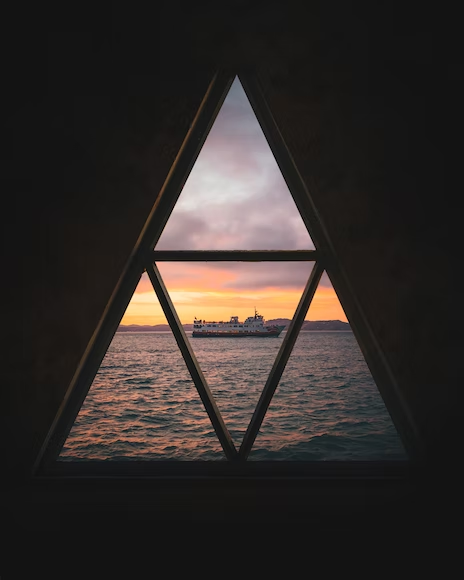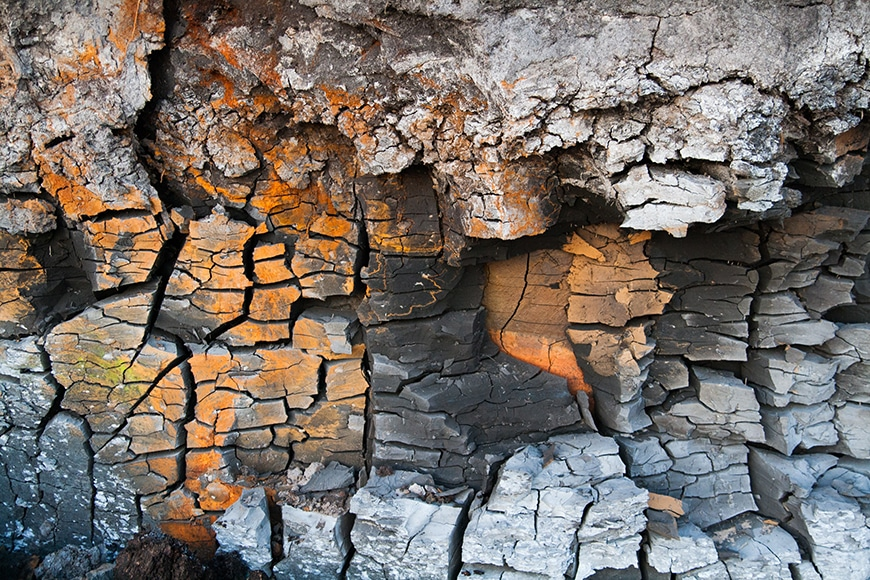line
Lines are a great starting point when thinking about formal elements, as they are almost everywhere.
Start by looking for lines in your composition that can guide the viewer through your shot or to a specific focal point. These are known as leading lines. Your lines don’t necessarily need to be straight, horizontal or vertical; they can be curved, angular, or random too. Angular lines that converge into a central point, commonly known as a vanishing point, will add perspective to your image. Think of how a straight road or railway line naturally disappears to a central point on the horizon – this is a classic example of a vanishing point.

Shape
Regarding shape in photography, this usually means a 2D subject outline. In contrast, form refers to a shape with a more 3D appearance. We’ve put these two together for this video as one formal element.
Effectively representing shape and form in your compositions can turn objects, landscapes and figures into defined, striking focal points. Using various lighting techniques, such as backlighting, silhouettes, and paying attention to shadows, will help elevate the shapes and forms in your shot.

Space
Building space into your compositions creates a sense of scale and brings added depth to your shot. It can also provide breathing room for your image’s main subject, allowing the viewer to focus on the scene’s primary features.
Adding space to your compositions is particularly useful with outdoor photography, where you may want to emphasise the scale of geographical features – such as mountains and bodies of water. However, you can add space effectively when shooting almost any photographic subject.

Repetition
Repetition in photography refers to the technique of integrating recurring elements, patterns, or themes in a composition to produce a sense of rhythm and balance in an image.
Pattern and repetition in photography hold the viewer’s attention by using strong repetitive elements. The patterns can keep the eye anchored or move it around an image using line

Texture
Texture in your composition can bring your image to life by giving the viewer a tangible connection with it, and is particularly popular in macro photography. You can draw textures out of all kinds of surfaces and environments. And to do this, you can use a wide range of lighting setups and shoot with a variety of depth-of-field.
Textures are ideal for experimenting – try different setups and see what you like. You can use flat light with the camera head-on to bring out the surfaces of a weathered wall. Or, use backlighting for ripples in dunes, shallow depth-of-field for intricate materials, and long-exposure to get the silky-smooth look of flowing water.

Colour
A prominent colour in your image whether it’s a concrete colour block or a set of similar colours that form a palette can make a bold statement in your shot.
Colours can also convey a mood to your image that will be emotive to the viewer. And you could also single out one particular colour to make a striking statement and have it ‘pop out’ of your shot.

Tone
Focusing on tone in your image means using variables of contrast and light and dark areas to bring depth to your image.
The tone is fundamental in black-and-white photography, where it should be used to guide the viewer through your image where there is no colour present to focus their attention.
Practice makes perfect when it comes to tone, and we recommend trying different lighting scenarios and contrast levels for your preferred aesthetic.

